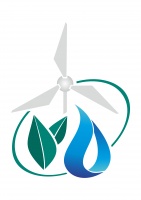Introduction of Integrated Water Resources Management (IWRM) principles on the Isfara small transboundary river
| Title | Introduction of Integrated Water Resources Management (IWRM) principles on the Isfara small transboundary river |
|---|---|
| Category of tools | Public participation principle |
| Field of application |
|
| Usability of practice for adaptation to climate change | High |
| Implemented by | USAID/CAREC |
| Used by |
Country: Kyrgyzstan |
| Practice also applied in the following localities |
Uzbekistan and Tajikistan Isfara River Basin |
| Local specifics |
Transboundary river |
| Practice usage period |
Start date: 01.04.2012 End date: 31.10.2016 |
| Problem solved through this practice |
Imperfections of the water management mechanism in the Isfara small transboundary river basin |
| Tools used in the practice |
The principle of stakeholder engagement in decision-making associated with water management of small transboundary river; IWRM planning technique |
| Description of the practice and its results |
The river originates in Kyrgyzstan in Ak-Suu Glacier on the northern slope of the Turkestan Ridge 3,193 m above sea level. The Ak-Suu ruins are located close to the river source. Near the settlement of Karavshin, the river is called the same name. Crossing the national border, the river merges with the Kshemysh River (Kshemyshsai) and, further on, the river receives the name of Isfara. Actions: Establishment of stakeholder groups, i.e. Small Basin Councils (SBC) representing local authorities, NGOs, water users and local communities. SBC secretariats independently hold internal semi-annual meetings. Thus, the SBCs serve as platforms to exchange opinions and information as well as take joint decisions associated with the enhancement of the overall situation in the river basin. Results: Creation of national Small Basin Councils (SBC) on the Isfara River allowed a platform for exchanging opinions and information as well as for drawing joint decisions to improve the overall situation in the Isfara River Basin, including the development of the IWRM basin plan for the target basin. |
| Lessons learnt and recommendations made |
Lessons learnt: Introduction of IWRM principles is the pre-requisite of stable and fair water supply irrespective of a given water user’s location. Recommendations: Currently, when local stakeholders are represented in SBCs and are engaged in joint water management, it is necessary to hold thematic seminars to ensure sustainability of SBC operations in the future. In the long term, it might be possible to establish a joint body to manage the whole river basin. |
| Source of practice |
Foreign tools (transfer of foreign experience) |
| Brief information on the project |
Development and implementation of basin plans constitute principal elements of integrated water resources management. Multi-agency coordination mechanism via basin councils or coordination groups is an important advantage of IWRM. This approach allows streamlined coordination and synergy of actions on all levels of management hierarchy. Project title: Stakeholder partnership in joint policy-making: assistance to transboundary cooperation in small watersheds of Central Asia. Project duration: Apr 2012-Oct 2016 Project goal and objectives: introduction of the integrated water resources management (IWRM) practice in three transboundary watersheds and its scaling-up in Central Asia. Project beneficiaries: communities of the Isfara small transboundary river basin, specialists of water and environmental agencies, farmers. Project implementer: USAID/CAREC. |
| Funding source | USAID |
| Information sources | |
| Form submission date | 02.04.2018 |
| Print Compare with other practice |




